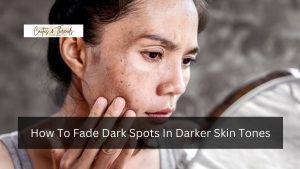
Dandruff is a common scalp condition that affects people of all ages and can be persistent and difficult to manage. Though many consider dandruff to be a single issue, there are actually several types of dandruff, each with unique causes and characteristics.
In this article, we’ll explore the different types of dandruff, their underlying causes, and effective strategies to treat and prevent them.
What is Dandruff?
Dandruff involves the excessive shedding of dead skin cells from the scalp, often resulting in white or yellow flakes in the hair and on the shoulders.
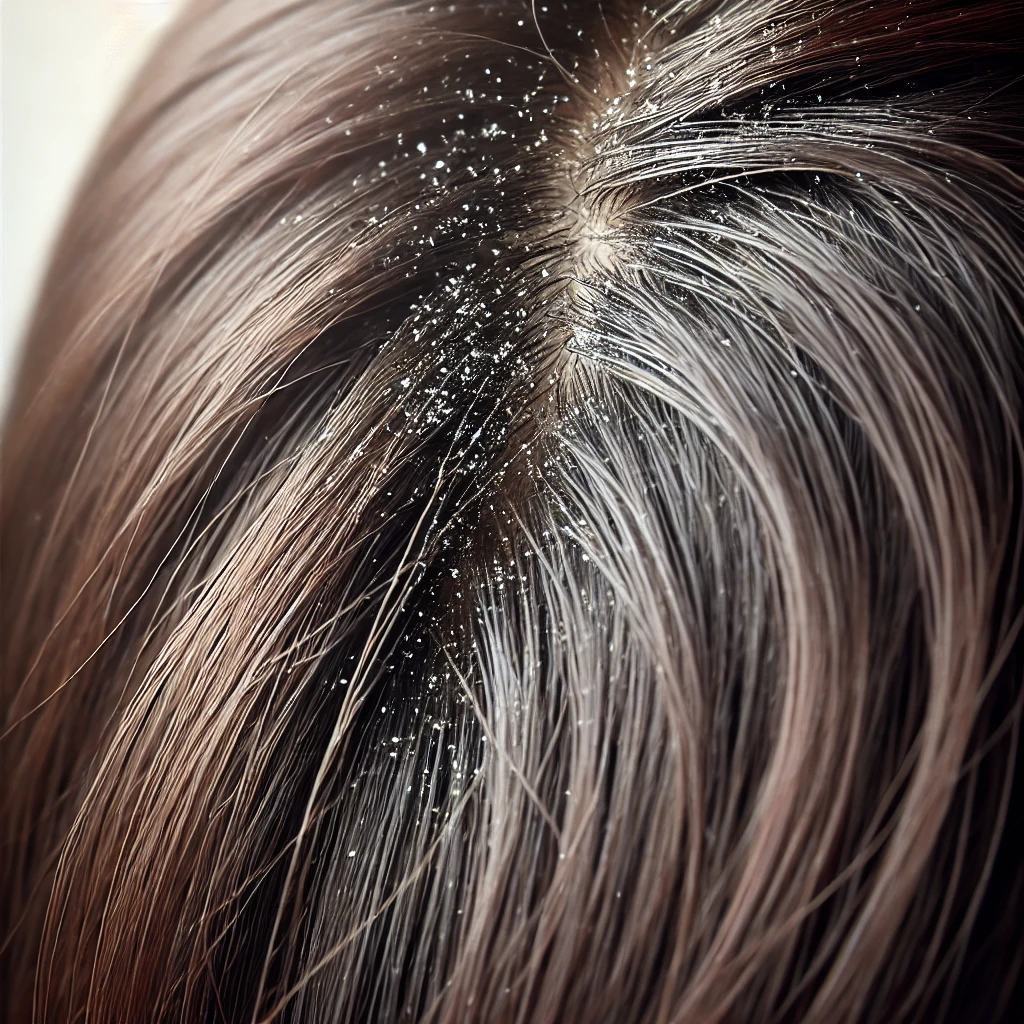
Though generally harmless, dandruff can lead to discomfort, itchiness, and even embarrassment. Understanding the type of dandruff you’re experiencing can help you determine the best treatment approach.
Types of Dandruff
1. Dry Skin Dandruff
Description: The most common type, dry skin dandruff often occurs in winter or in low-humidity conditions. It usually appears as small, white flakes that are easy to brush away, and is accompanied by an itchy scalp.
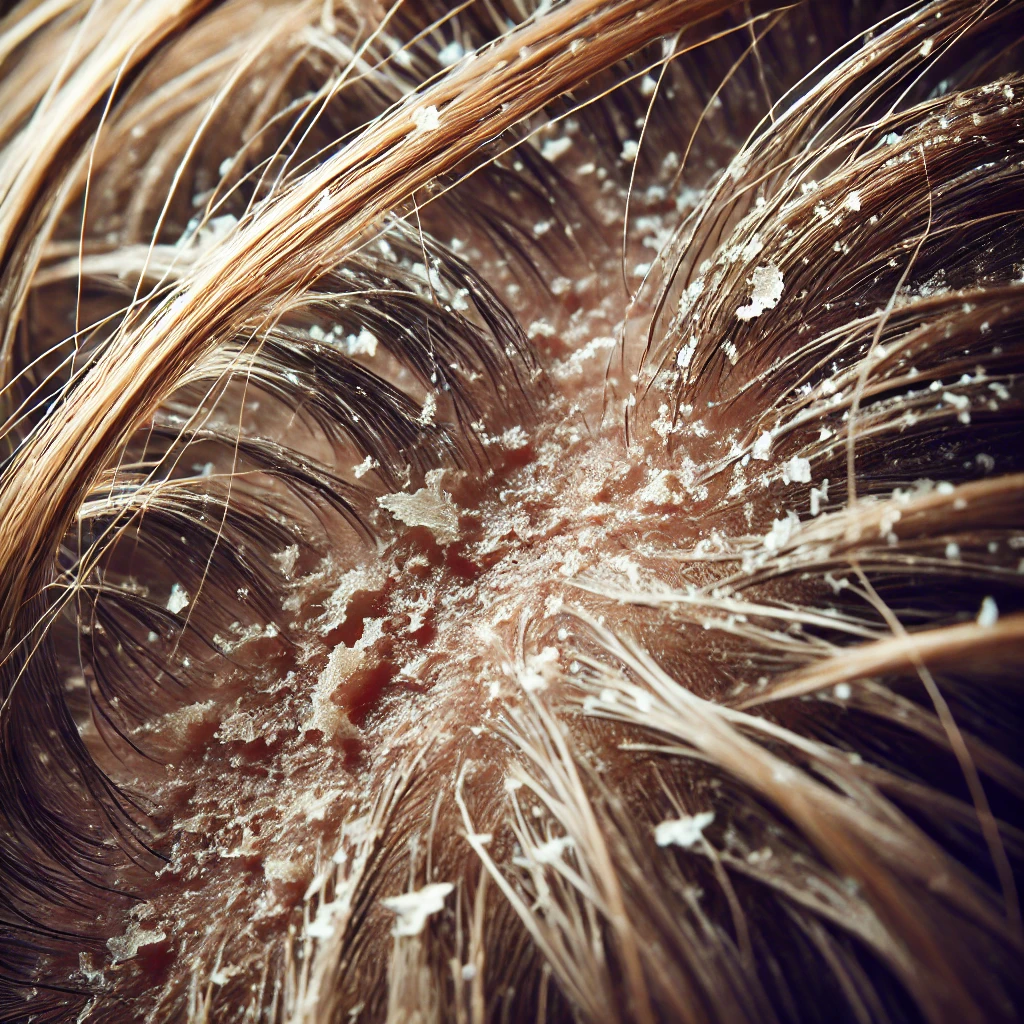
Causes: Dry skin dandruff is usually caused by dehydration of the scalp. Environmental factors like cold weather, low humidity, and hot showers can exacerbate dryness.
How to Stop It:
- Moisturize: Use a moisturizing shampoo and conditioner specifically formulated for dry scalp. Ingredients like aloe vera, coconut oil, and tea tree oil can be beneficial.
- Limit Hot Showers: Hot water can strip natural oils from the scalp, so rinse with lukewarm water instead.
- Hydration: Drinking enough water daily helps keep your skin, including the scalp, well-hydrated.
2. Oily Scalp Dandruff
Description: Oily scalp dandruff, also called seborrheic dermatitis, produces larger, greasy yellow flakes. It often causes a greasy scalp and itching and can appear on other areas of the body like the eyebrows, sides of the nose, and behind the ears.
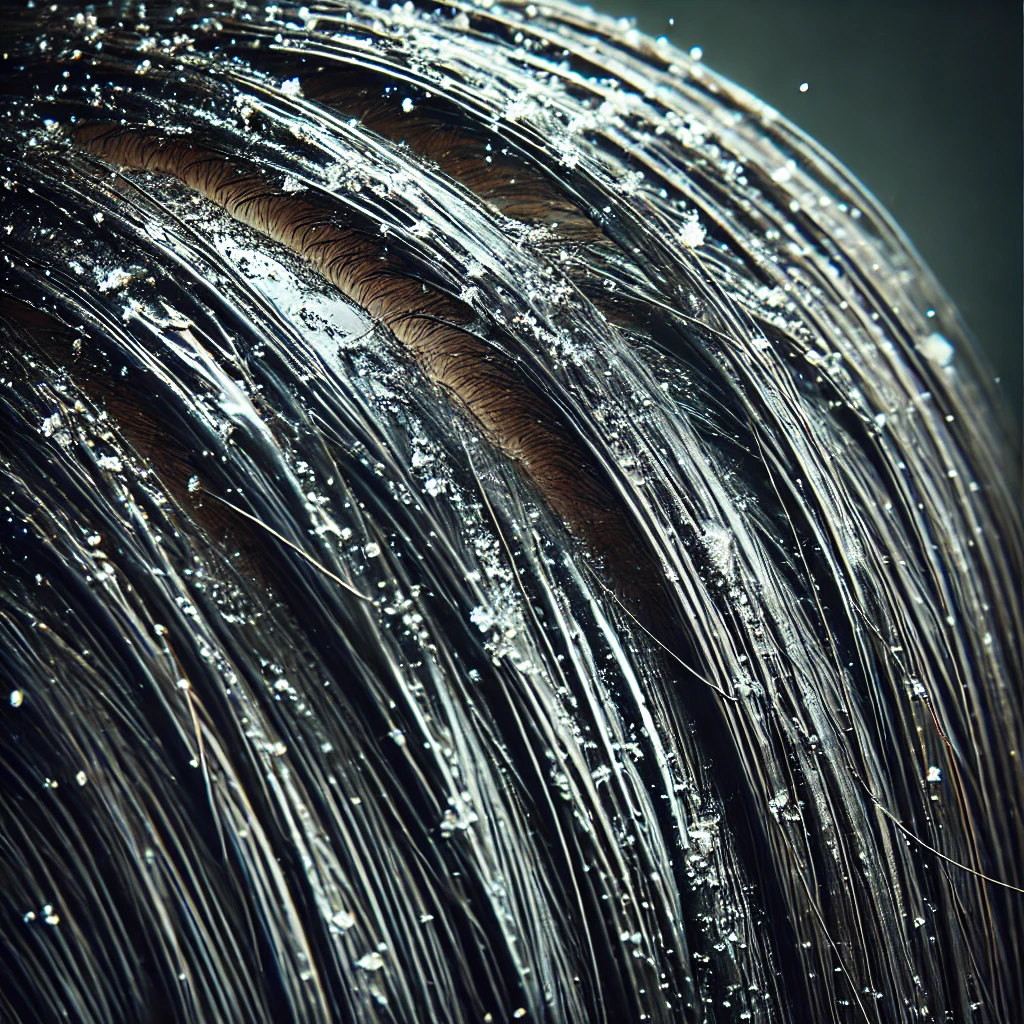
Causes: This type of dandruff is caused by an overproduction of sebum (oil) on the scalp, which leads to the buildup of skin cells. It is often aggravated by stress, hormonal imbalances, and certain weather conditions.
How to Stop It:
- Clarifying Shampoo: Use a clarifying or anti-dandruff shampoo containing active ingredients like zinc pyrithione, selenium sulfide, or salicylic acid to help control excess oil.
- Regular Washing: Wash hair regularly to remove excess oil and prevent buildup.
- Balanced Diet: Eating a balanced diet can help regulate oil production, and foods rich in omega-3 fatty acids, zinc, and biotin may improve scalp health.
3. Fungal Dandruff
Description: Fungal dandruff results from the overgrowth of a yeast-like fungus called Malassezia, which naturally resides on the scalp. When the fungus grows out of control, it leads to scalp irritation and the production of oily, thick flakes.
Causes: Fungal dandruff can be triggered by excess oil on the scalp, which feeds the fungus. A weakened immune system, stress, and hormonal changes may also contribute to this type of dandruff.
How to Stop It:
- Anti-Fungal Shampoos: Use a shampoo containing ketoconazole or zinc pyrithione to reduce fungal growth.
- Tea Tree Oil: Known for its antifungal properties, tea tree oil can help balance scalp microbes. Add a few drops to your regular shampoo.
- Maintain Scalp Cleanliness: Keep your scalp clean and avoid using heavy hair products that can contribute to oil buildup.
4. Product Buildup Dandruff
Description: Product buildup dandruff is caused by the accumulation of hair styling products, such as hairspray, gels, and serums, which can leave residues on the scalp and clog hair follicles. The buildup of these products can mimic dandruff by causing flaking and scalp irritation.
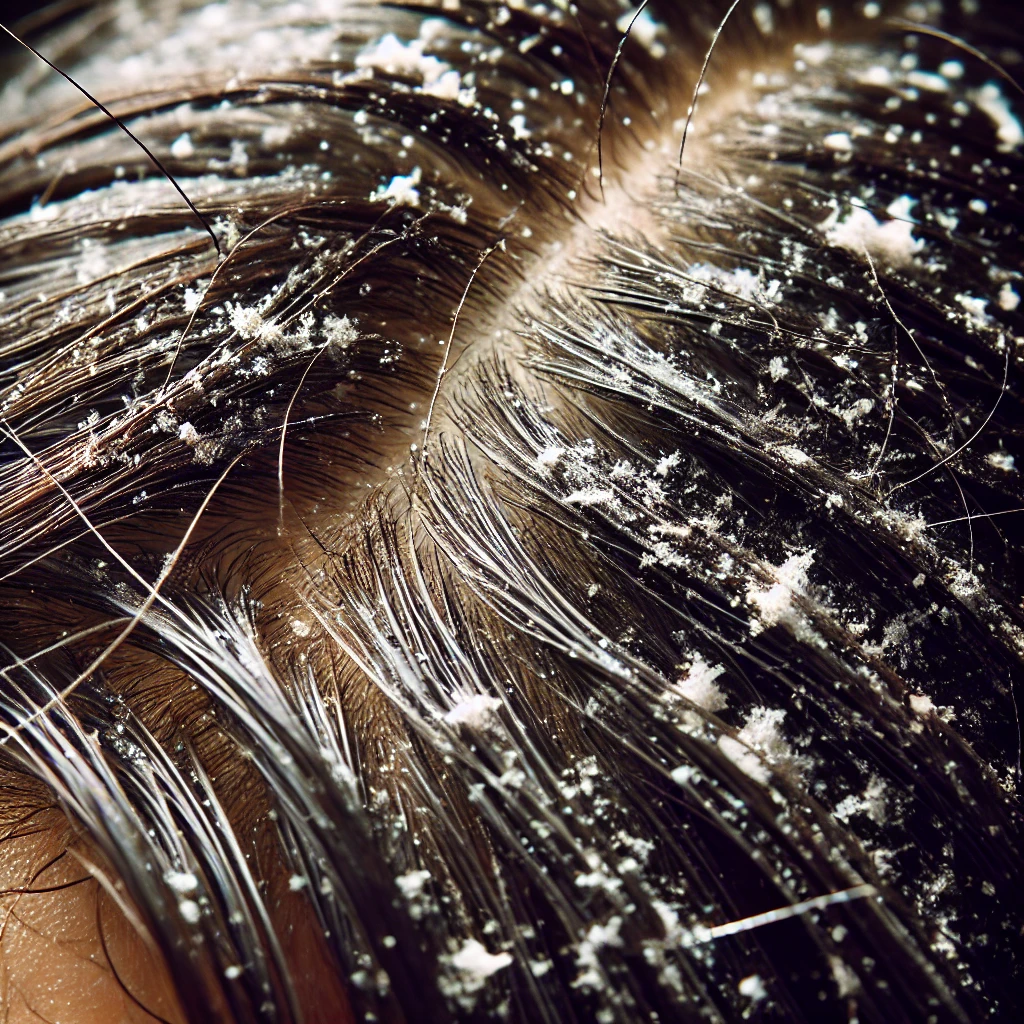
Causes: Using heavy or oil-based hair products too frequently or failing to wash the scalp properly can lead to product buildup dandruff.
How to Stop It:
- Clarifying Shampoo: Use a clarifying shampoo once a week to remove product residue and prevent buildup.
- Limit Product Use: Try to reduce the number of styling products you use or opt for lighter, water-based formulas.
- Exfoliate the Scalp: Consider using a gentle scalp scrub to exfoliate and remove any buildup. Look for scrubs with ingredients like sea salt or sugar.
5. Psoriasis-Related Dandruff
Description: Psoriasis-related dandruff is caused by scalp psoriasis, an autoimmune condition where skin cells multiply rapidly, leading to thick, silvery-white scales. Unlike typical dandruff, psoriasis can be painful, itchy, and even bleed when scratched.
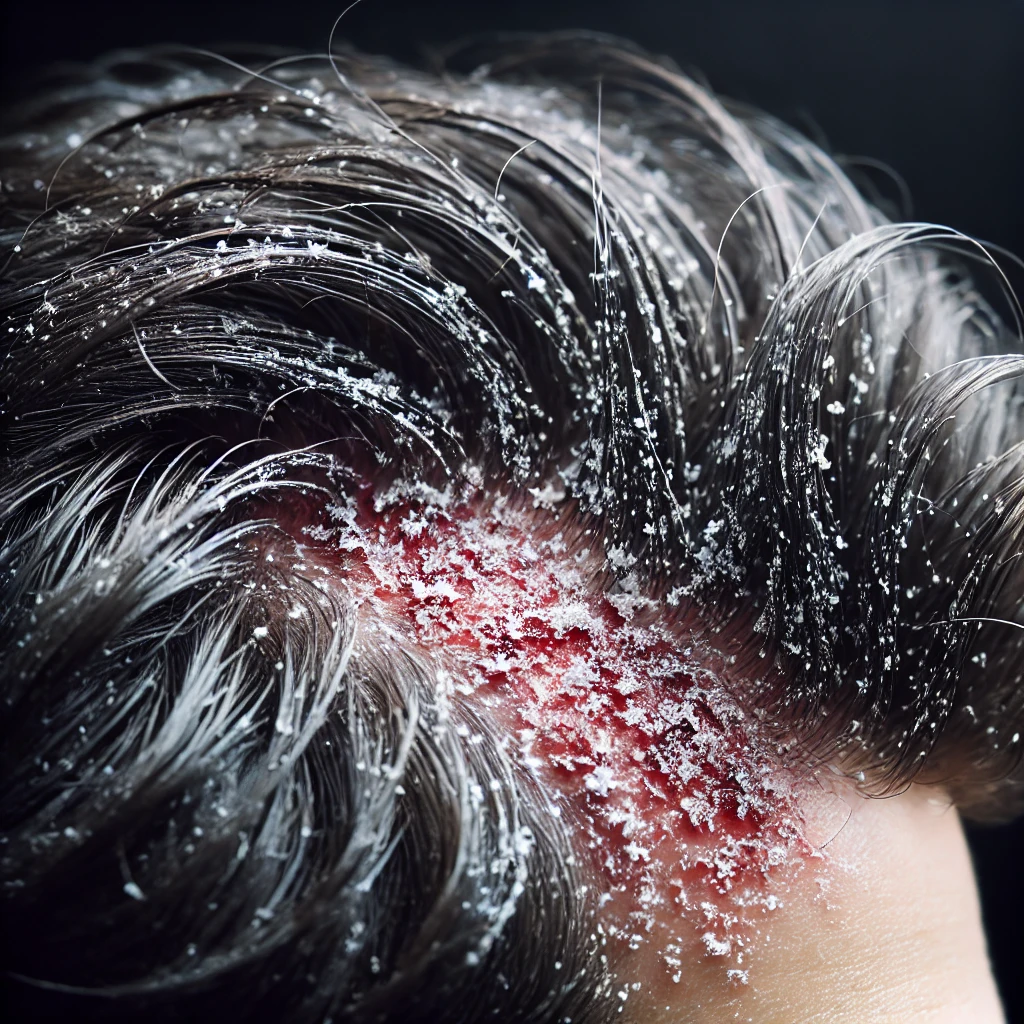
Causes: Scalp psoriasis is linked to the immune system and can be triggered by stress, cold weather, and certain medications.
How to Stop It:
- Medicated Shampoos: Shampoos with coal tar or salicylic acid are effective for reducing scaling and itchiness.
- Moisturize Regularly: Keeping the scalp moisturized can help reduce flaking and discomfort.
- See a Dermatologist: For persistent cases, consult a dermatologist who may recommend treatments such as topical corticosteroids.
Conclusion:
Understanding the different types of dandruff can help you choose the most effective treatment and management approach. Whether you’re dealing with dry scalp, fungal dandruff, or product buildup, there are natural and medicated options available to keep dandruff at bay.
By identifying the root cause of your dandruff and adopting the appropriate remedies, you can achieve a healthier, flake-free scalp and more comfortable lifestyle.
READ ALSO:


